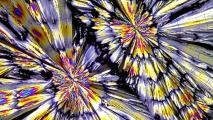For people with post-traumatic stress disorder (PTSD), the benefits of MDMA-assisted psychotherapy may last long after their final treatment session.
A newly published paper reports that the majority of people who underwent the still-nascent PTSD treatment in clinical trials continued to benefit from it 12 months later — a discovery that suggests MDMA could be even more useful for overcoming trauma than previously thought.
A Need for PTSD Treatment Options
PTSD is a psychiatric disorder that affects millions of people — approximately 3.5% of U.S. adults.
It develops after a person witnesses or experiences a traumatic event — a violent assault or military combat, for example — and symptoms can range from general feelings of sadness to intense flashbacks and nightmares.
This is the breakthrough that the world needs right now.
Berra Yazar-Klosinski
For decades, PTSD treatment options have been both limited and largely ineffective.
Talk therapy can help patients cope with PTSD symptoms. However, it often does little to address the root cause of their PTSD, and the same is true of commonly prescribed medications, such as Zoloft and Paxil.
“They are really just for symptom control, and because they often don’t work, they have to be augmented with other prescriptions,” Susan Sisley, psychiatrist and director of the Scottsdale Research Institute, said in 2019.
In recent years, a promising alternative to these standard PTSD treatment options has emerged: MDMA-assisted psychotherapy.
MDMA Therapy Trials
In 2019, the non-profit Multidisciplinary Association for Psychedelic Studies (MAPS) published a combined analysis of six double-blind Phase 2 clinical trials of MDMA therapy as a PTSD treatment.
During the trials, which involved 103 people total, researchers administered an “active” dose of the psychoactive drug MDMA (equal to 75-125 mg) to 72 people prior to two, eight-hour-long therapy sessions.
Those treatment sessions were spaced several weeks apart and combined with standard weekly therapy sessions. Thirty-one other participants in the trials served as the control group, receiving a much smaller, non-active dose of MDMA (0-40 mg) prior to their sessions.
By the end of the trials, 54% of the participants in the active MDMA group no longer qualified for a PTSD diagnosis compared to 23% in the control group.
Those trial results alone were enough for the U.S. FDA to grant MDMA therapy a “Breakthrough Therapy Designation” as a PTSD treatment.
With its Phase 3 trials now ongoing, MAPS has published a paper in the journal Psychopharmacology detailing the long-term outcome of the active MDMA therapy.
Long-Term Results
Following the placebo controlled study, after the benefits had been documented, the researchers gave the participants in the control group the option of undergoing the “active” MDMA therapy in an unblinded crossover study.
This new paper then followed up with about a hundred of these participants who ultimately received the “active” dose.
Two months after treatment, fully 56% of all treated patients no longer met the criteria for a PTSD diagnosis. And of the 91 participants the researchers were able to talk to 12 months later, 67% no longer met the criteria.
The inclusion of control group members in the crossover study means the MAPS researchers can’t compare these long-term results to a placebo. Still, they find the results encouraging.
“Although our Phase 3 trials are not yet completed, these long-term data support the hypothesis that MDMA-assisted psychotherapy may provide significant advantages in treatment outcomes, safety, and durability over available PTSD treatments,” MAPS researcher Berra Yazar-Klosinski said in a press release.
“This is the breakthrough that the world needs right now,” she added.
We’d love to hear from you! If you have a comment about this article or if you have a tip for a future Freethink story, please email us at tips@freethink.com.






